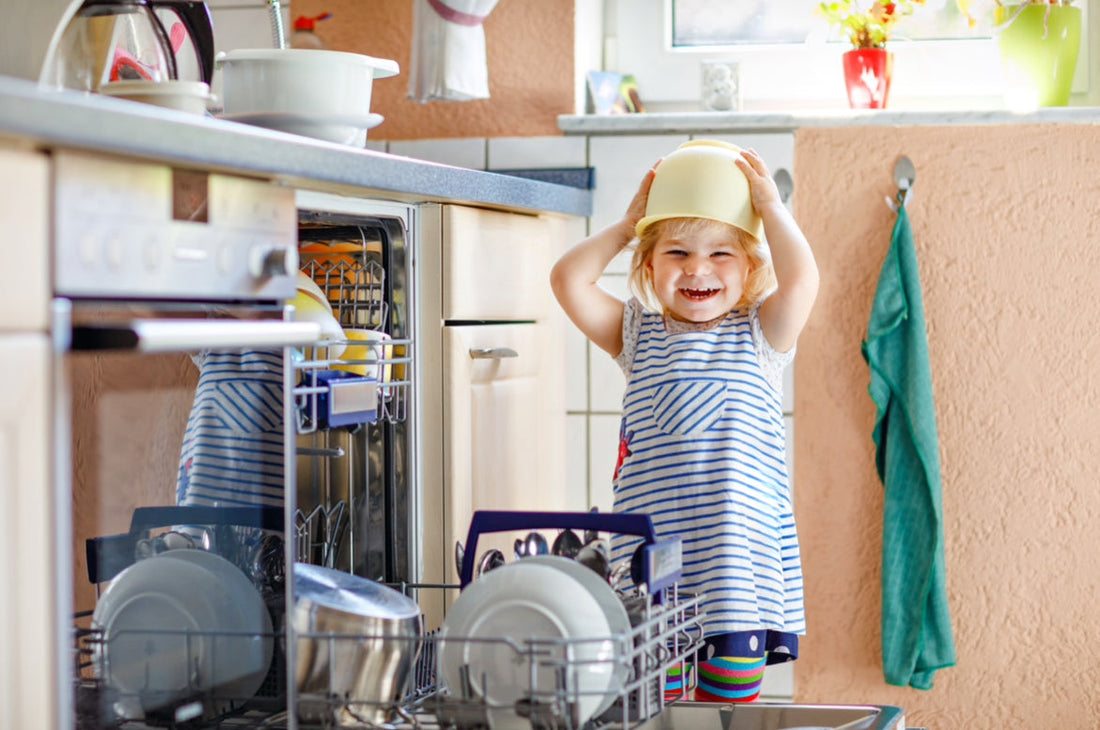
Not Sure If Your Dish Soap Is Truly Safe? A Must-Read for Every Household with Kids!
Share
Have You Ever Thought About the Dish Soap Your Child Might Ingest?
That One Sudden, Slightly Paranoid Thought
I was in my usual post-dinner autopilot, putting away my kid’s water bottle, when my brain—uninvited, as usual—decided to throw a curveball:
“what if the dish soap isn’t really gone? What if it’s still there? Just hanging out. Invisible. Waiting.”
Cue the mental chaos. The slow-motion flashbacks of every plate, every bottle, every spoon my child had used. The creeping sense of unease. The sudden urge to rewash everything.
Is Dish Soap Actually… Gone?
I mean, I always assumed so. Scrub, rinse, done. The end. Right?
Turns out, not really.
🔹 The EPA (Environmental Protection Agency) found that up to 1% of dishwasher detergent can remain on dishes after a cycle. That’s one percent. It sounds tiny, but over time? That’s a whole lot of chemical residue clinging to your kid’s sippy cup. (Source: EPA)
🔹 The EWG (Environmental Working Group) found that 7–10% of synthetic chemicals in dish soap can still be present on dishes after rinsing. And plastic dishware holds on to even more. (Source: EWG)
So yeah. That soap? Still there. Hiding. In plain sight.
Does It Really Matter Though?
For adults? Maybe not so much. But kids? Different story. Their little bodies are like sponges—soaking up everything, tasting everything, chewing on things just because.
And here’s where it gets really interesting:
🧪 Phthalates (commonly found in dish soap) are known endocrine disruptors—meaning they mess with hormones. And if that sounds concerning for an adult, imagine what it does to a still-developing body.
🧠 Some studies suggest long-term exposure could be linked to neurodevelopmental issues like ASD (Autism Spectrum Disorder) and ADHD. While nothing is 100% confirmed, the potential connection is enough to make you rethink that neon-green soap bottle. (Source: NIH, Journal of Pediatrics)
As a Mom of a Child on the Spectrum…
Most kids? They go through life just fine. No major struggles, no unexpected sensitivities. But kids like mine? Their bodies don’t follow the usual rulebook.
And let’s be real—ADHD, autism spectrum disorder… these diagnoses aren’t rare anymore. They’re skyrocketing.
I used to think, What’s the harm? A little exposure here and there—dish soap residue, synthetic chemicals, food additives. The body filters things out, right? That’s what I told myself. That’s what I wanted to believe.
But my child’s body doesn’t work like everyone else’s. His nervous system processes the world differently. His gut reacts to things other kids don’t even notice. A little exposure? Some kids can handle it. Kids like mine? Maybe they can’t. Maybe it builds up. Maybe it lingers in ways we don’t fully understand yet.
And that’s the part that keeps me up at night. The what-ifs.
What if I had questioned things sooner? What if I had made changes before it became a problem?
I can’t rewrite the past, but I can change how I move forward.
So now? I pay attention. Because the things we assume are “probably fine” might be the very things making life harder for some kids.
And if another parent—someone standing where I once stood—reads this and thinks twice? Then sharing this was worth it.
So… Now What?
Here’s What I’m Using Now


If you’ve never questioned your dish soap before, well… now you have.



1 comment
It’s a problem with clothing, too. We tend to overuse soaps and detergents on dishes and clothes. Twice rinsing is a good idea, but starting out with safer products to begin with is even better. Thanks for the article and suggestions.